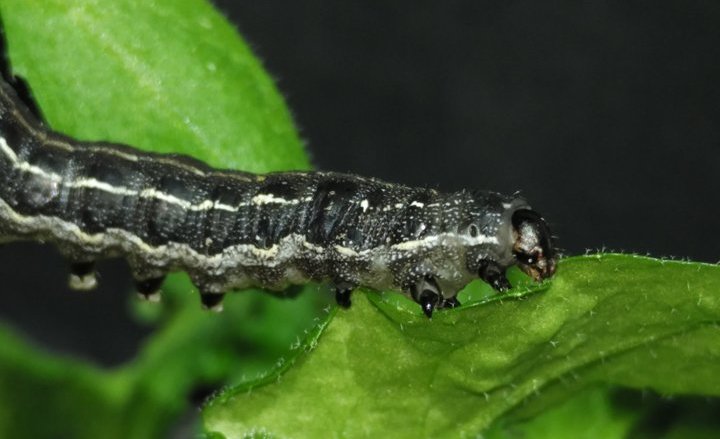Just like animals, plants often face threats from their environment, including attacks by parasites, pests, and grazing animals. Unlike animals, however, plants cannot simply move away from the source of such threats. A new study from researchers at NIPGR, New Delhi, offers insights into the intricacies of the plant defence system and how it recognizes and responds to danger, particularly from insect pests.

Have you ever wondered how plants, in spite of lacking a nervous system, respond quickly to dangers like hungry insects? A recent study from researchers led by Jyothilakshmi Vadassery at National Institute of Plant Genome Research (NIPGR), New Delhi sheds light on this question by revealing the role of calcium channels in recognizing such danger and activating the plant defence system.
Many agricultural pests damage plant leaves by feeding on them, a process known as herbivory. Insect herbivory restricts plant growth and causes crop loss in many economically significant crops. In an agricultural economy like ours, such crop losses can be particularly alarming.
In order to protect themselves, plants adopt an armoury of chemical strategies including setting up structural barriers, producing secondary metabolites, and releasing phytohormones (plant hormones). Generally, plants recognize and respond to herbivory by raising calcium levels in leaf cells, which signals danger to the rest of the plant and triggers its defence mechanisms. However, how these calcium waves arise in the first place remains poorly understood.
Vadassery’s team, led by postdoctoral fellow Mukesh Kumar Meena, investigated this question by using the plant model system Arabidopsis, and a nocturnal moth known as tobacco cutworm (also cotton leafworm) which feeds on Arabidopsis leaves. Through their experiments, they identified a calcium channel called CNGC19 which appeared to be responsive to herbivory.
“In order to validate this, we created mutant plants lacking the calcium channel and investigated it against a natural one,” says Vadassery. The researchers found that insects fed much more extensively on the leaves of the mutant plants (without the calcium channel), while the control plants still had some undamaged leaf tissue left. The likely reason for this was that mutant plants could not signal and activate their defence systems to protect against the insect once it had begun feeding.
The researchers next attempted to understand the mechanism by which a plant generates and propagates calcium waves in response to an attack by pests. For this, they worked in collaboration with MK Mathew at the National Centre for Biological Sciences (NCBS), Bengaluru and proved that CNGC19 is indeed a calcium channel. “This interdisciplinary collaboration encouraged us to ask more questions as to what happens to plants if they do not have this crucial channel (CNGC19),” says Vadassery.
Calcium channels like CNGC19 function like gates that can be opened and closed in response to a signal. When an insect starts feeding on a leaf, proteins embedded in the leaf cell membrane respond and activate these channels. This results in the ‘gates’ opening and allowing the entry of calcium ions into the cells, generating a calcium wave.
Using fluorescence imaging techniques, the researchers could observe this process in action. They observed that the calcium signals started at the insect biting site on the leaf and spread to the entire leaf within 60 seconds. However, the mutant plants which lacked the calcium channel had highly reduced and restricted calcium signals. “This confirmed that the CNGC19 channel is not only involved in calcium passage but also played a significant role in the spread of signals through leaves,” explains Vadassery.
Plants often accumulate certain chemicals (also called secondary metabolites) in their leaves as a defence mechanism. These make the leaves less tasty and difficult to digest for insects. The researchers showed that CNGC19 can play a role in regulating the production of certain defensive chemicals (jasmonic acid and glucosinolate) as the mutant plants had lower levels of these in their leaves. The study is the first report to reveal that the secondary metabolite pathways are also controlled by this calcium channel.
“This study will help to understand the inherent signalling mechanism in plants for crop protection,” says Ashok Giri, Principal Scientist and Chair, CSIR-National Chemical Laboratory (NCL), Pune, adding that it will be important to study molecules like CNGC19 in other economically significant crop plants.
This study is a step forward in comprehending the mechanism of plant defences and opens the door for more basic studies on how plants activate diverse calcium channels to recognize insect herbivory.